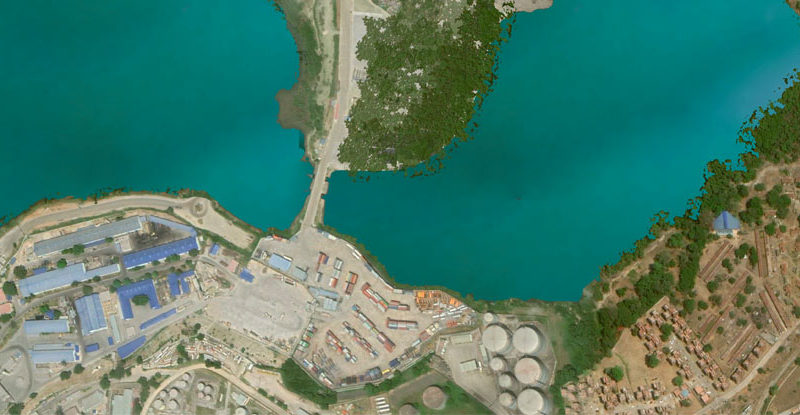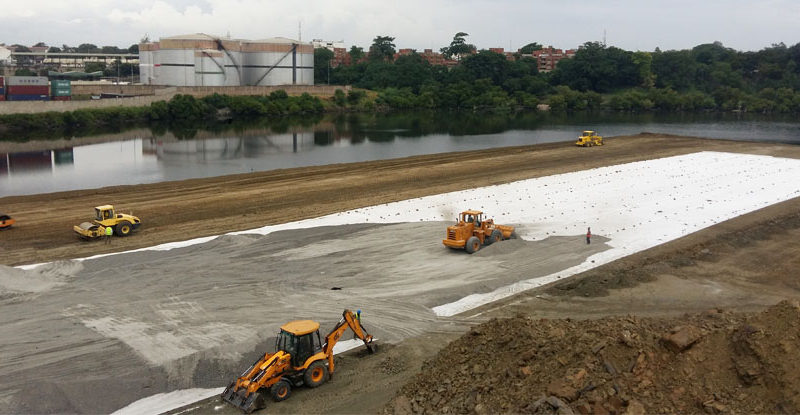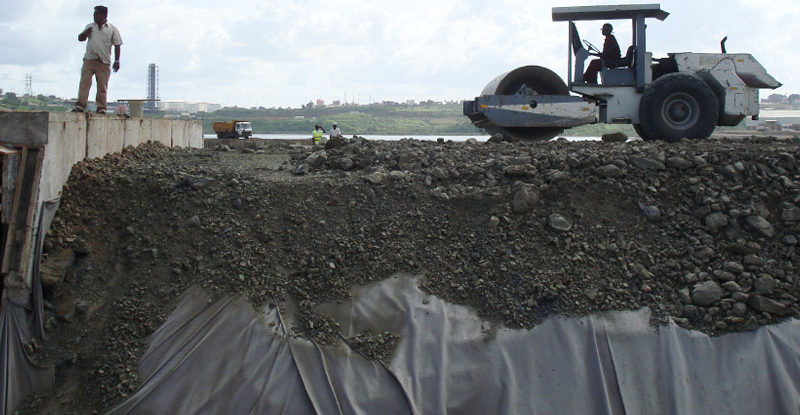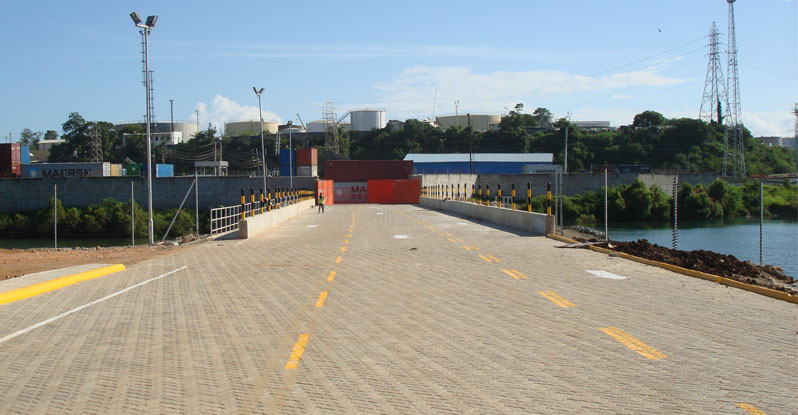Kenya is considered the “Gateway to East Africa” with its sea port located in the coastal city of Mombasa. The causeway in Changamwe leading into the port is notoriously known for its bumper-to-bumper traffic. There are only limited entries to the port and trucks are regularly queuing for hours, sometimes days to drop off vital cargo for export. This causes several delays and leaves CFS’s cut off due to heavy traffic.
One such CFS, located adjacent to the port, strategically procured a parcel of land on the opposite side of Tudor Creek with the aim to create a new private causeway bypassing the traffic. The new causeway would cross over the creek directly into their CFS. Crossing the water body meant building a bridge.
The challenges were several. The location of the proposed causeway passed directly through a toxic dump site which had sprawled uncontrolled over the last 40 years. The bridge would cross at a point where the creek channel narrowed to approx. 100m, accelerating the flow of water creating rapids and churning up silt, making safe working conditions difficult. The creek flows into the Indian Ocean making it tidal, limiting daily operations to a 6hr window in-between tides.
Accepting the challenge, GEA was appointed as a consultant to assist in the design & construction of the bridge and causeway. The outcome needed to be both time-sensitive and cost-efficient. Several feasibility studies were conducted and the most economical and fastest to construct was a completely new concept in Kenya; a geosynthetic bridge.



